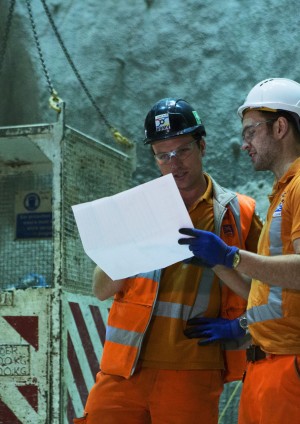Introduction
During the Crossrail project the Programme Supply Chain Team (PSCT) monitored financial and capacity risk in its supply chain. To make the task manageable only “critical packages” (generally higher value or more important purchases) were in scope. Even so, there were around 20 to 25 critical packages per Tier 1 contract, of which there were approximately 80. Therefore there were tenderers on over 1,500 tender lists to be monitored. This work involved gaining information on tender lists (names, postcodes, registered numbers, risk scores etc) and contract awards, before consolidating this into a central spreadsheet forming a database of key supply chain information. Capacity analysis based on tender values and published turnovers, alongside the Dun & Bradstreet financial failure scores, enabled the team to identify and track contractors that could potentially be at risk and warn the Tier 1 contractors accordingly.
Limitations of this model
Whilst critical package monitoring enabled PSCT to use its resources more efficiently, PSCT still had to monitor hundreds of tenderers and suppliers across the programme. It became evident as the project proceeded that PSCT’s knowledge of key supply chains was inevitably very limited below the Tier 2 level at which Crossrail’s monitoring took place. The team did not always have the resources to drill down into specific packages or particular trades or industries. For example, a metalwork package does not depend solely on a Tier 2 supplier installing the items at the station. The supply chain for this package runs down through to the fabricator, raw materials supplier, even down to the commodity suppliers. Companies within this supply chain are affected by many exogenous factors. Occasional news stories aside, PSCT was not able to expend a lot of energy in gathering greater market intelligence. This broad, but shallow, view may have been a hindrance.
On the positive side, PSCTs need to review packages right across the project gave the team good general knowledge of common, high profile, high value packages required on various stations. Items such as terrazzo flooring, metalwork, glazing, metal doors, glass reinforced concrete, cladding and piling were all needed on multiple sites. However, whilst this model provides some industry and sector insight, selecting a smaller group of key programme-wide packages at an early stage would possibly add more value. A thorough investigation into each industry could be undertaken, vertically tracking each supply chain from Tier 2 downwards. Using resources such as market intelligence reports, expert opinions, site visits, industry news and even closer observation of raw material fluctuations, a detailed bank of knowledge for each key supply chain would be built up. Developments that may affect the programme several months down the line may be highlighted well in advance. Not only would this enable PSCT to identify risks potentially far below the contractors working on site, it would also facilitate more value-adding conversations with the Tier 1 contractors to develop suitable mitigation plans. A world class supply chain management function should seek a level of knowledge that is at least comparable to, and may exceed, that of the main contractors. Furthermore it may better use the intellectual abilities of the team. Procurement and supply chain management is increasingly being seen as a profession of choice for graduates and major programmes should respond by being able to carry out full and comprehensive analyses of its major supply chains.
Conclusion
PSCT relied on two main sources of data (Dun & Bradstreet and Tier 1 procurement schedules) because the approach adopted was broad but shallow in terms of depth of penetration into the supply chains. Actively gathering market intelligence in more depth but for a narrower range of works and services would mean a supply chain function that is more fully appraised of key industries and their impact on the programme. The Supply Chain Team on any major programme should aspire to a world class level of market knowledge.
Lessons Learned
– Focusing solely on Tiers 1 and 2 may be suboptimal on major programmes as it discourages from looking in greater depth.
– Future projects should select a smaller number of key packages for in-depth investigation and seek to become fully immersed in these supply chains to develop a thorough understanding.
– Depending on available resources a Supply Chain Manager should decide early what type of management and monitoring they wish to provide, if not both.

